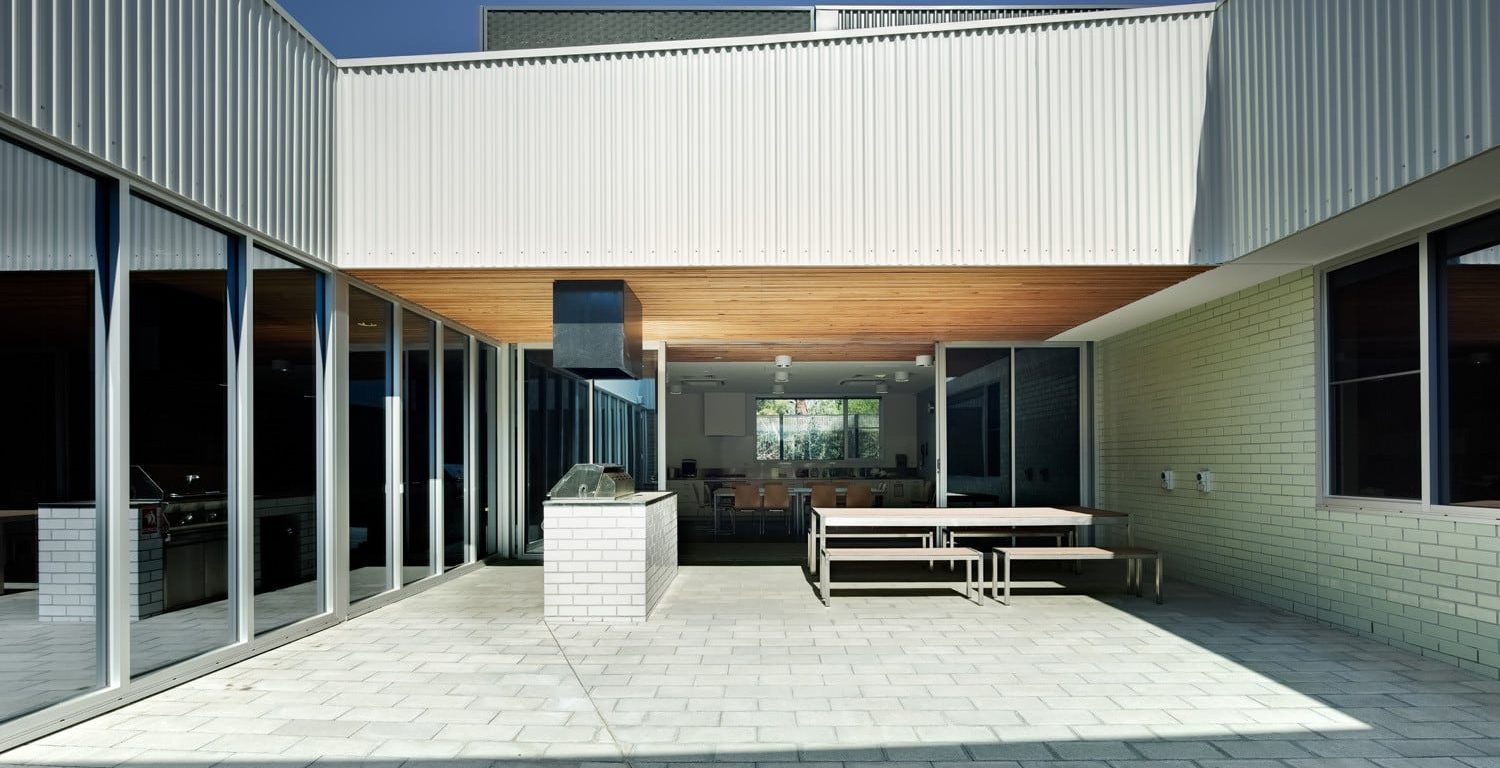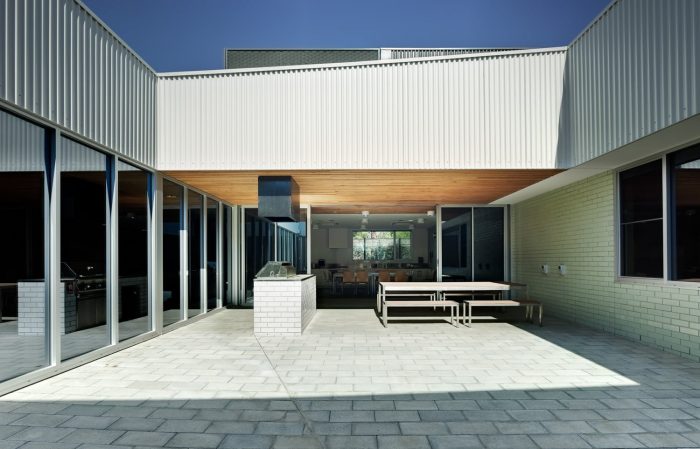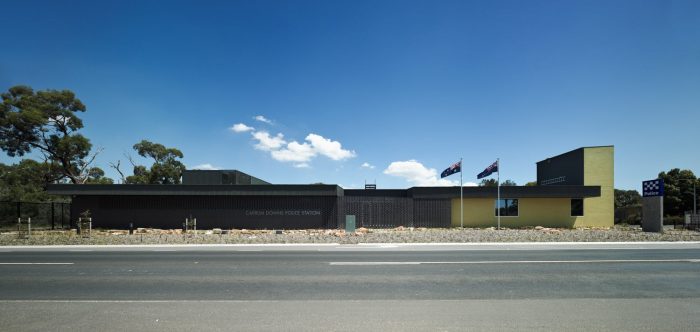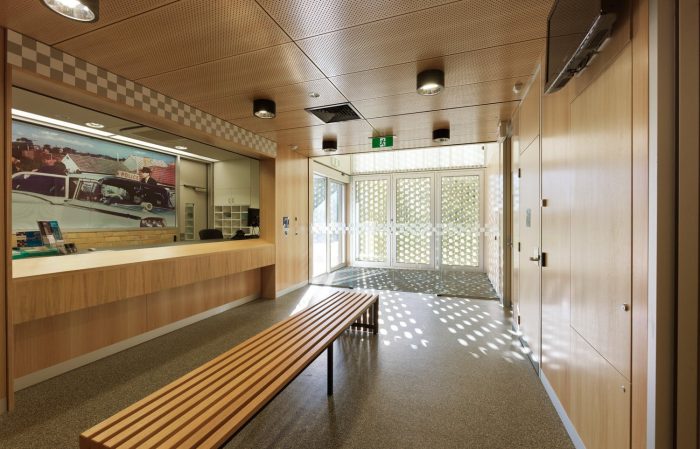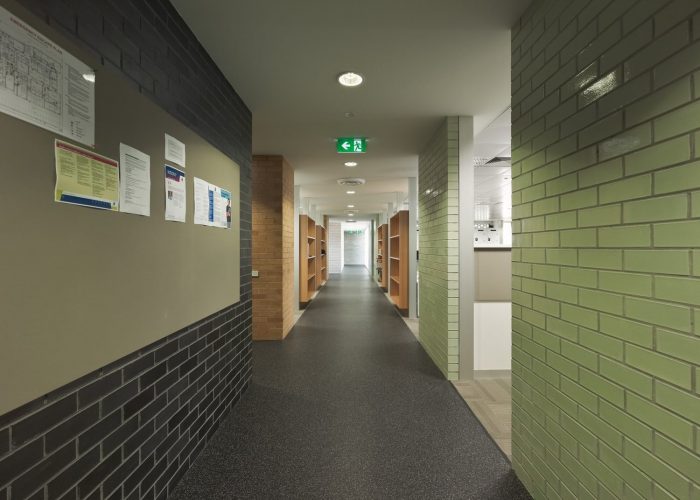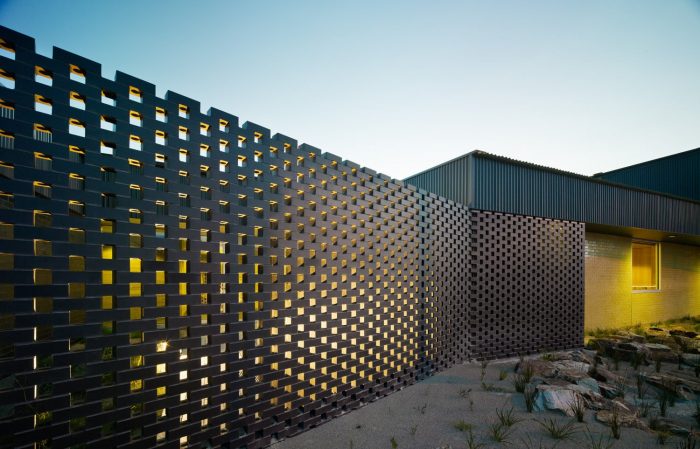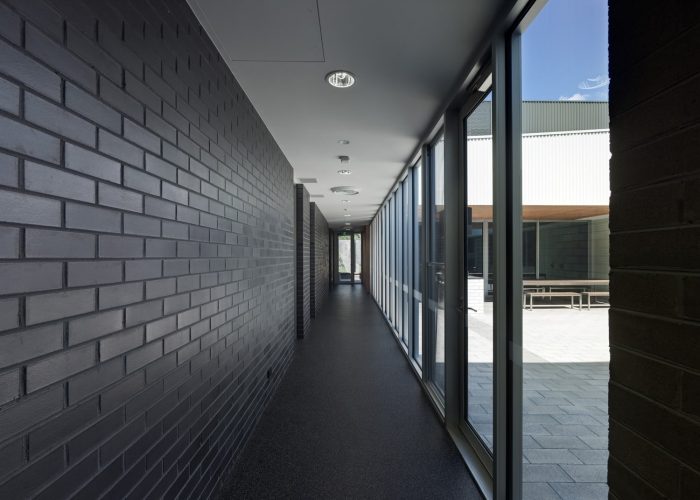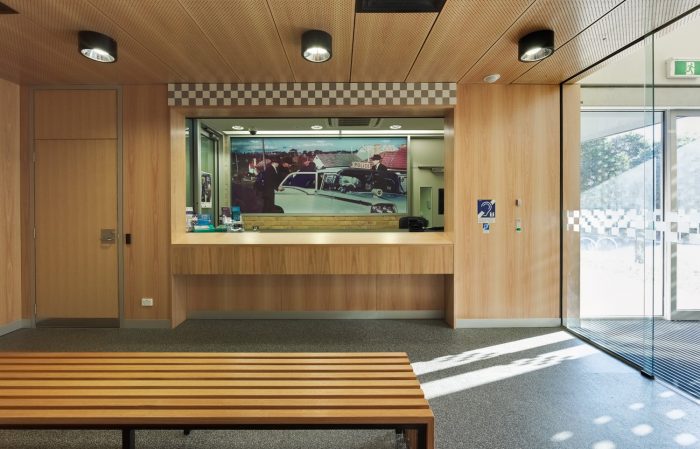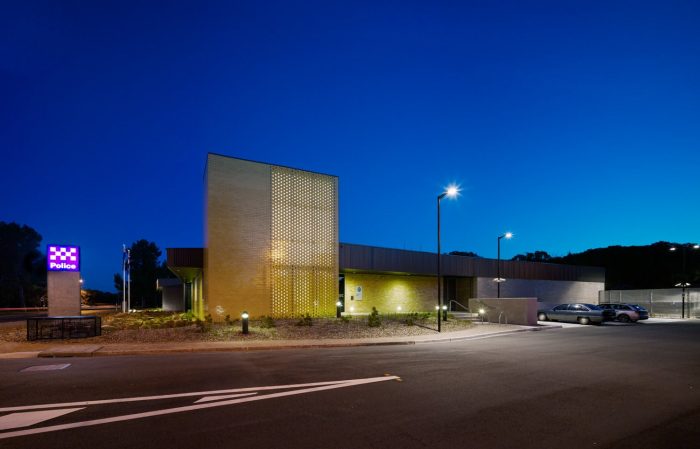Carrum Downs警察局是我们为维多利亚警察局完成的一系列项目中的第三个,也是最大的一个。作为该组织适度建筑网络中的下一个环节,它延续了我们早期对通用概要本地化的兴趣,以及传统项目可能带来的一定程度的创新机会。
The Carrum Downs Police Station is the third and largest in a series we have completed for the Victoria Police. As the next link in a civic network of modest buildings for this organisation it continues our earlier interest in the localization of a generic brief and the opportunity that a conventional project might present for a degree of innovation.
该设施可容纳来自制服处、交通管理股和现场服务部的70人,需要被组织成一系列独立的区域–每个区域都有自己的身份、功能、安全、舒适度和与外界的关系。还需要在入口处更有效地分隔不同的用户群,以平衡诱人的公共界面和安全的操作区域。 与这些功能要求平行的是,必须通过建筑反映出维多利亚州警察的首选和不断变化的组织文化,以及从高度封闭到更开放的工作场所的转变。
The facility accommodates 70 people from the Uniform Branch, Traffic Management Unit and Field Services Division and was required to be organised as a series of discrete zones -each with its own identity, set of functions, security, amenity and relationship to outside. More effective separation of different user groups at the entry was also required to balance between an inviting public interface and secure areas for operations. Parallel to these functional requirements was the imperative to reflect, through the architecture, the preferred and changing organizational culture of the Victoria Police and a move from a highly cellular to more open plan workplace.
因此,考虑到这种变化,我们试图重新思考24小时警局的类型,特别是在规划上,并将其视为一个社区而不是一个机构。我们把这个车站想象成一个小型的城市,而不是通常的中央长廊和两侧的隔间:一个由程序性元素组成的集群,每个元素都是独立的体量,在材料上被视为一个建筑,并通过特殊的砖块选择来区分。
So with this change in mind we sought to rethink the typology of the 24-hour station especially in plan and consider it as a community rather than an institution. In place of the usual long central corridor with cubicles either side we imagined this station as a mini city: a cluster of programmatic elements each figured as an individual volume, treated materially as a building and distinguished through a particular choice of brick.
作为一个元素的集合体,它们被屋顶和宽敞的流通空间结合在一起,这些空间有时会与相邻的项目重叠并延伸,形成非正式交流的休息区和组织部门之间的重叠。内部庭院的加入使内部空间的光线、通风和视野得到了改善,同时也保持了外部街道立面的隐私和安全。
As a collection of elements they are united by the roof and the generous circulation spaces that at times overlap with and extend the adjacent program to form break out areas for informal exchange and overlaps between the organizational divisions. The inclusion of internal courtyards allows light, ventilation and aspect to interior spaces while maintaining privacy and security to the external street facades.
在内部,砖的颜色和纹理的变化将这些区域中的每一个都表现为一个独立的体量(作为一个小型建筑),并提供了一个定位和识别的手段。在外部,砖的表面呈现出家庭化的特点,并参考了邻近的郊区情况。虽然车站主要是低矮的形式,但入口处的塔楼将设施的规模从家庭转移到公民,并作为夜间的照明灯塔,预示着维多利亚警察在公路上的存在。
Internally the variation of the colour and texture of the brick expresses each of these zones as a discrete volume (as a mini building) and provides a means of orientation and identity. Externally the brick face presents as domestic and references the adjacent suburban condition. While the station is predominantly low in form the entry tower shifts the scale of the facility from domestic to civic, and as an illuminated beacon at night, heralds the presence of the Victoria Police on the highway.
Architects: Kerstin Thompson Architects
Area : 2080 m²
Year : 2010
Photographs :Peter Bennetts
Structural Consultant : John Mullen & Partners
Builder : Behmer & Wright
Design Team : Kerstin Thompson, Kelley Mackay, Scott Diener, Mike Macleod, Jacqui Alexander, Laurence Dragomir
Landscape : Simon Ellis
City : Melbourne
Country : Australia

